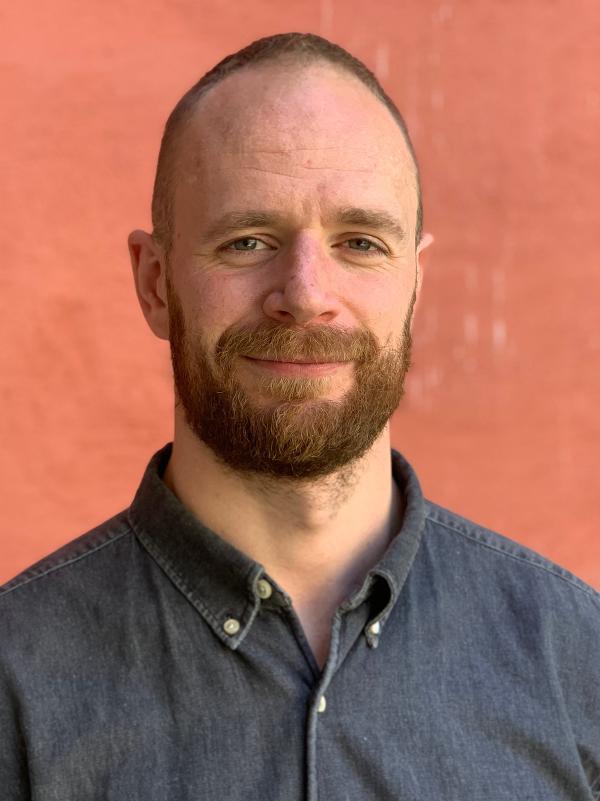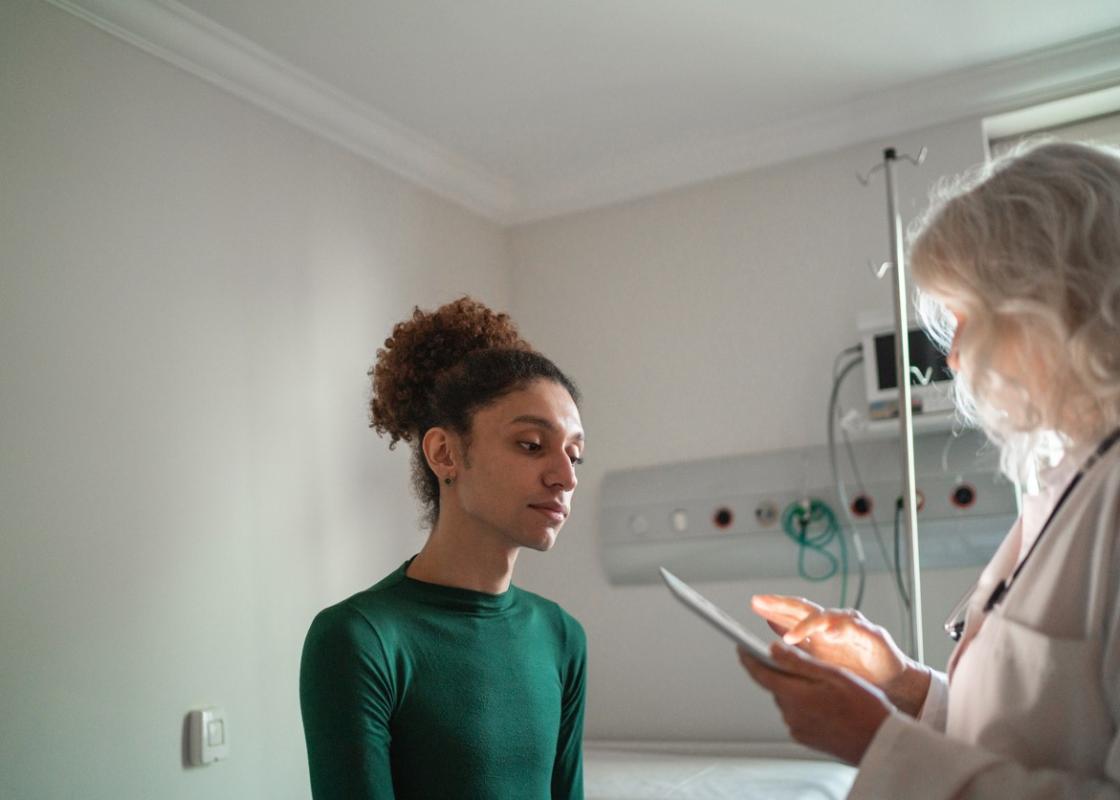“The field of medicine used to be more patriarchal. Since the 1970s in particular, we have seen a shift towards greater decision-making power for patients and more focus on the patient's own needs and wishes,” according to Ketil Slagstad.
The development towards greater autonomy for patients is one of the topics in Slagstad’s recent article. It deals with how trans medicine was bureaucratised towards the end of the 20th century.
Ketil Slagstad graduated from medical school in 2011. He worked as a doctor before becoming editor of the medical journal Tidsskrift for Den norske legeforening. He started as a doctoral fellow in medical history at the University of Oslo in 2019. He defended his thesis: On the Boundaries of Care: The Ephemerality of Transgender Medicine in the Welfare State, Scandinavia 1951–2001, on 25 October.
Created a treatment monopoly
In 2001/2002, a national gender identity clinic for sex reassignment treatment was established at Rikshospitalet.

“You call the clinic a monopoly.”
“Yes, I do. The need for financial management increased. What is known as hyperspecialized medicine was only to be offered in one place — i.e. at Rikshospitalet.
In the early 2000s, the gender identity clinic at Rikshospitalet operated on the basis of a binary, or twofold, understanding of gender. The researcher believes that this may have led to overtreatment.
“Thinking that medicine is the answer to every problem is a scary societal trend. Prescribing medical treatment is easier than working on the social causes of ill health,” says the author of the article.
The article is a reworked version of a chapter in Slagstad's doctoral thesis on trans medicine in Scandinavia from 1951 to 2001.
The researcher challenges the role of the medical “expert” in the thesis. The doctor-patient relationship has been characterised by an imbalance of power, according to Slagstad.
“Doctors and psychiatrists have not been good enough at listening to their patients. Patients' knowledge of themselves has often been overlooked by medical professionals who felt they were better qualified to decide which treatment would lead to the best outcome.”
Not a discipline in its own right
The first hormone treatments for trans patients were introduced in the 1950s. In 1963, the first vaginoplasty – was performed at Rikshospitalet.
At that time, trans medicine was an integral part of established areas of medicine, according to Slagstad.
“Trans medicine has never been a discipline in its own right."
Patients were treated by psychiatrists, endocrinologists and plastic surgeons, says the researcher.
Doctors had more influence over the treatment in the old system.
“It was generally accepted that doctors treated patients at their discretion. They made diagnoses and devised treatment based on their own experience and knowledge,” says Slagstad.
“The medicine has become more and more specialised since then. For example, psychiatrists administered hormone therapy to some patients in the 1950s, which is unthinkable today.”
Unnecessary monopoly
The treatment at the new gender identity clinic was to be led by a psychiatrist. According to Slagstad, psychiatry got a “hegemony” over the national treatment services.
As well as problematising the psychiatrist's role as medical “gatekeeper”, Slagstad is concerned with how Rikshospitalet’s monopoly affected the treatment itself.
“Treatment was not provided unless the goal was to undergo a complete change from one sex to another,” says Slagstad.
He refers to the fact that the actual need for treatment varies from person to person. Some patients have only wanted hormone treatment. Others have only wanted to change the legal gender in their passport, he says.
“What's interesting is that the treatment at Rikshospitalet is constructed as a unit. It is no longer accepted, for example, that psychiatrists can prescribe hormones and omit other parts of the treatment. Nor is it accepted that one clinic can provide all the treatment,” he explains.
Several of the procedures require specialised knowledge, the researcher emphasises: Genital surgery, for example, and in particular the construction of a penis.
Before the clinic was established, there was an ongoing discussion among doctors about what kind of treatment could be offered where. Many of them thought it was unnecessary to centralise treatment, says Slagstad.
“For example, hormone treatment itself for adults isn’t very complicated. After all, GPs prescribe oestrogen and testosterone to other patient groups.”
Overtreatment
By promoting a “full package” of sex reassignment treatment, Rikshospitalet’s treatment monopoly led to overtreatment, Slagstad believes. He calls this development a “paradox”.
“On the one hand, overtreatment is something medical experts have been fighting against. On the other hand, they continued insisting on unnecessary procedures that were contrary to patients' own needs and wishes."
An example of overtreatment is the mandatory removal of reproductive organs in order to change legal gender, practised until 2016.
“Some patients have wanted to remove their ovaries and uterus as treatment for genital dysphoria, while others have not.”
Male or female
All the patients were meant to “fit into the box”, says Slagstad. He suggests that the treatment was designed in line with a binary gender ideal. Trans women and trans men were meant to become “men” and “women” in the conventional sense.
The binary view of gender was particularly dominant in treatment in the 1950s.
“The treatment back then was based on the prevailing beauty ideals. What, for example, ticked the boxes for what a masculine man was supposed to be."
This practice changed in the 1970s, thanks both to the feminist movement and a growing scepticism towards medicalisation among doctors.
“People began to think that medicine had too much power over society, and that using medical tools to solve social problems was wrong.
This way of thinking continues to inform the arguments of activists who are critical of all gender-affirming treatment,” says Slagstad. One of their arguments is that the treatment reproduces traditional gender norms.
Generation gap in the trans environment
The issue of overtreatment is also discussed among transactivists and associations working for people with gender incongruity, says Slagstad.
While many of the younger generation embrace a trans identity, the older generation identifies more easily as “patients”.
According to Slagstad, trans persons who experience gender dysphoria are a diverse group. For example, some patients interrupt and/or reverse their treatment.
“We often hear talk of people who 'regret' their decision. This word does not cover the experience of the whole group. We don’t know enough about what that means.”
Slagstad calls for more knowledge about patients who discontinue gender-affirming treatment.
“We lack a follow-up system for these groups.”
“The activist associations can probably take more responsibility in this regard. This group has been pushed out into the cold because their doubts and negative experiences are perceived as threatening the right of others to self-determined treatment."
Treatment can be improved by building on the experiences of those who actually undergo it,” he says.
“That means listening to both positive and negative experiences.”
A longer version of this article was first published in Norwegian, and was translated by Allegro language services.


